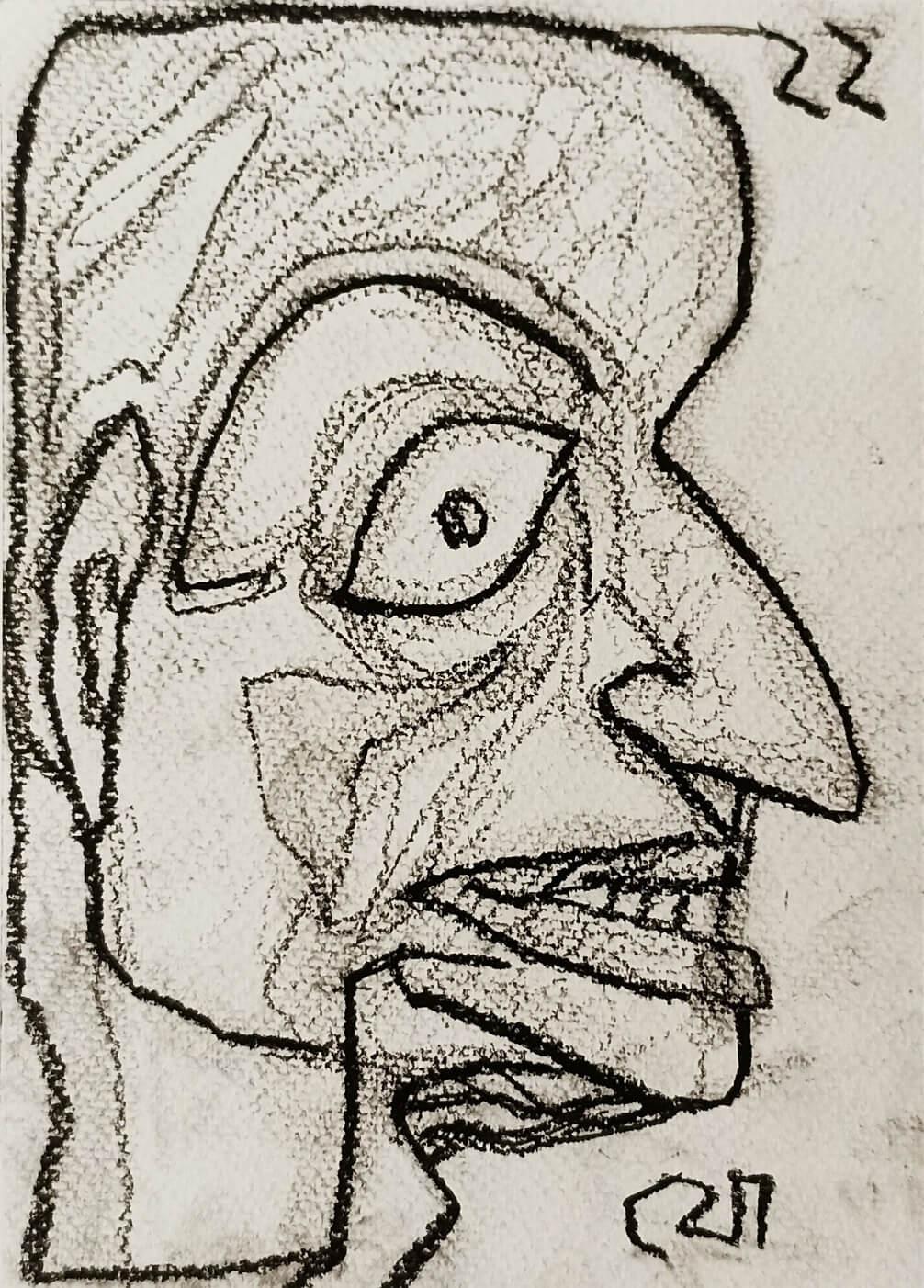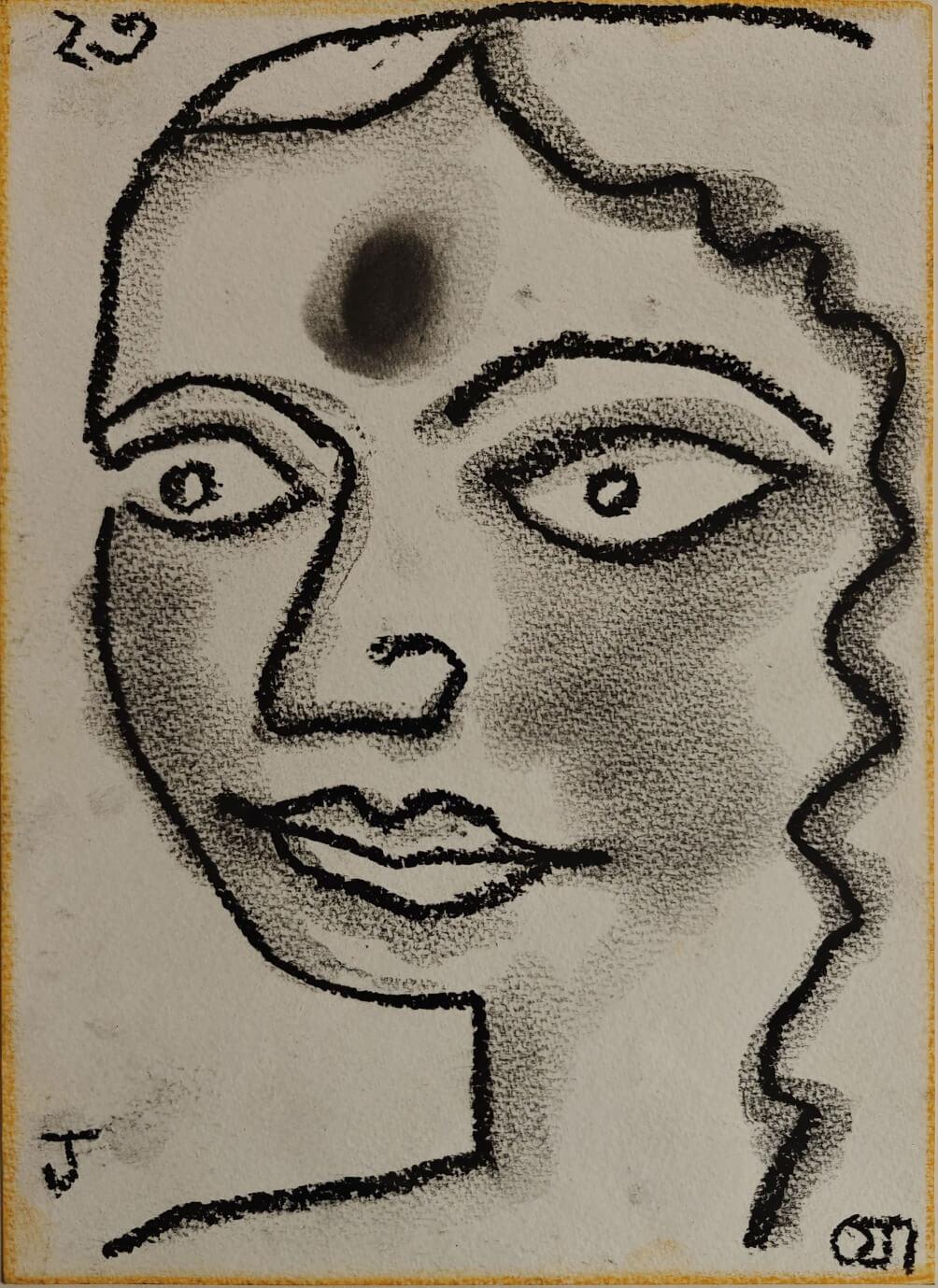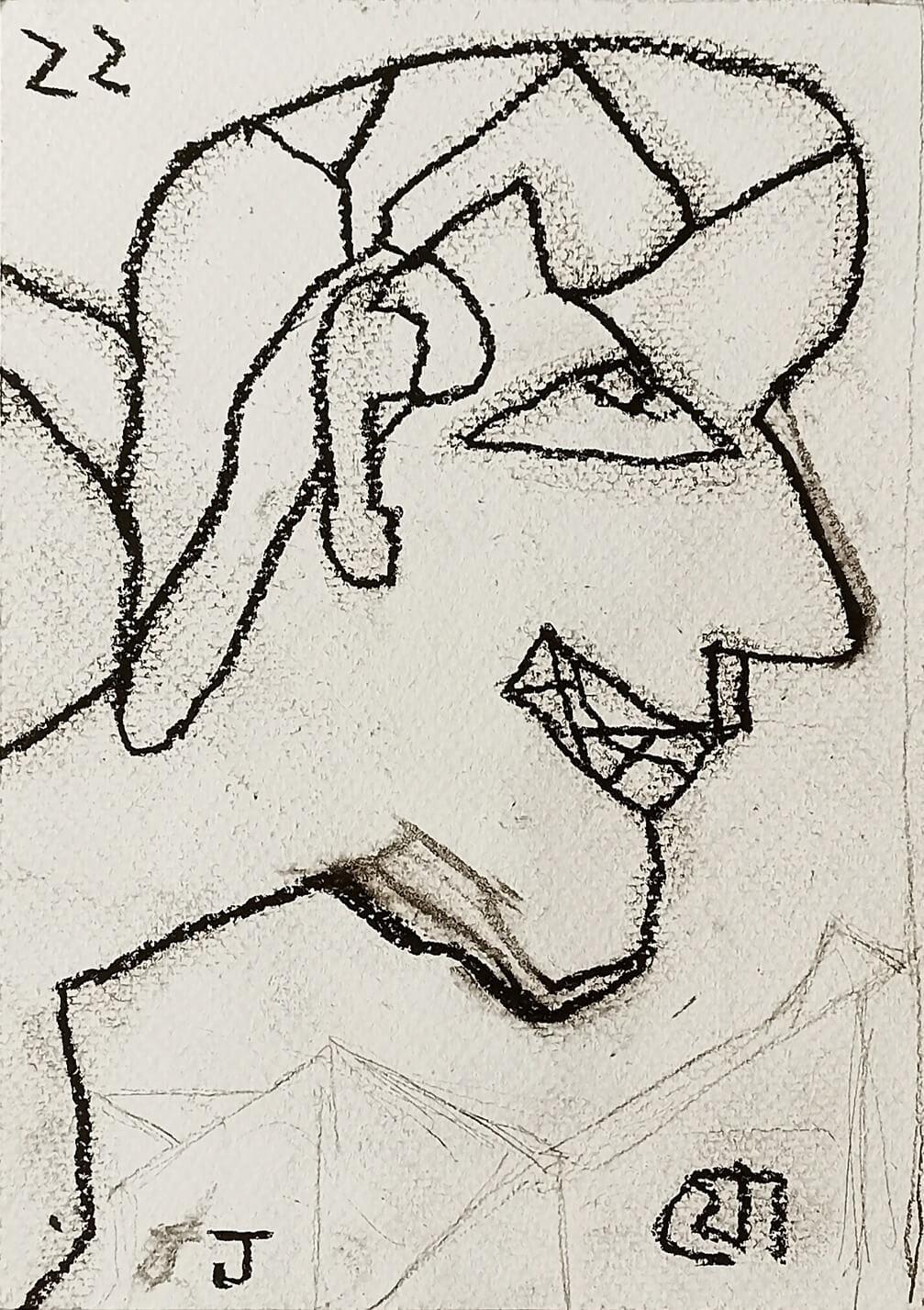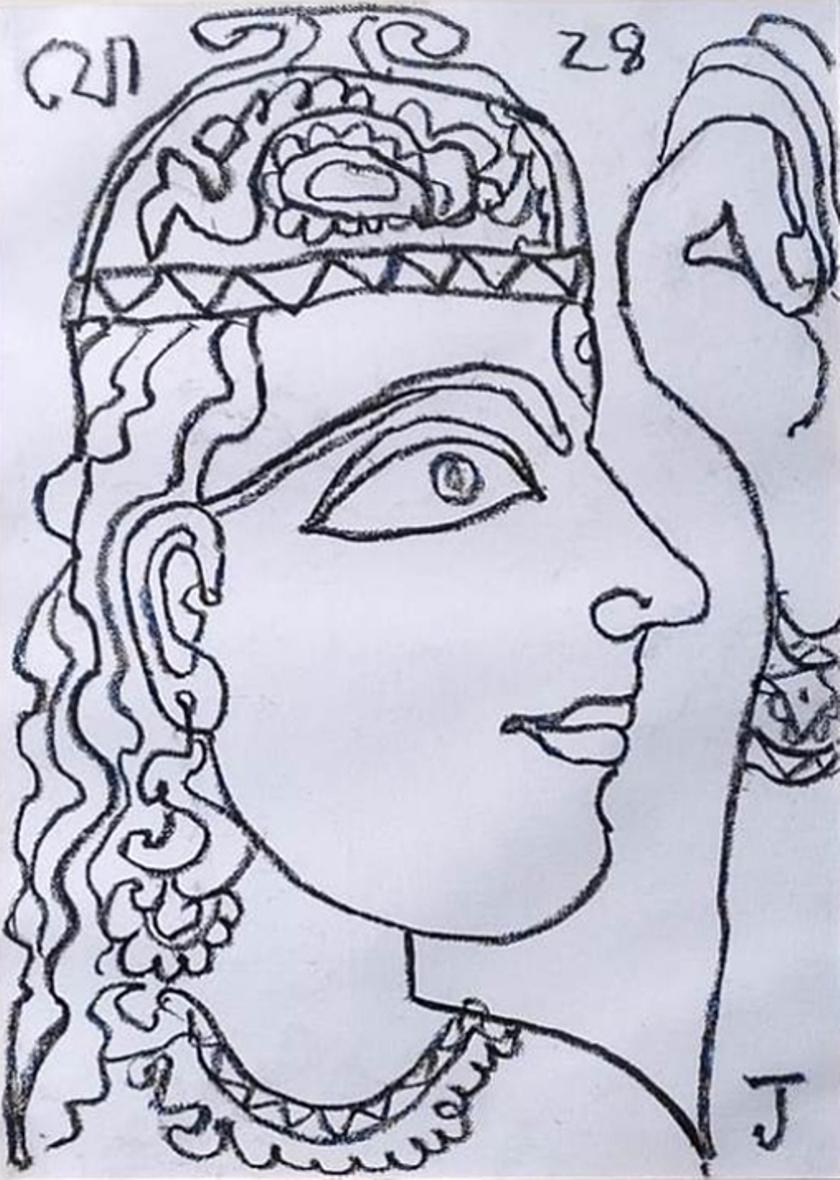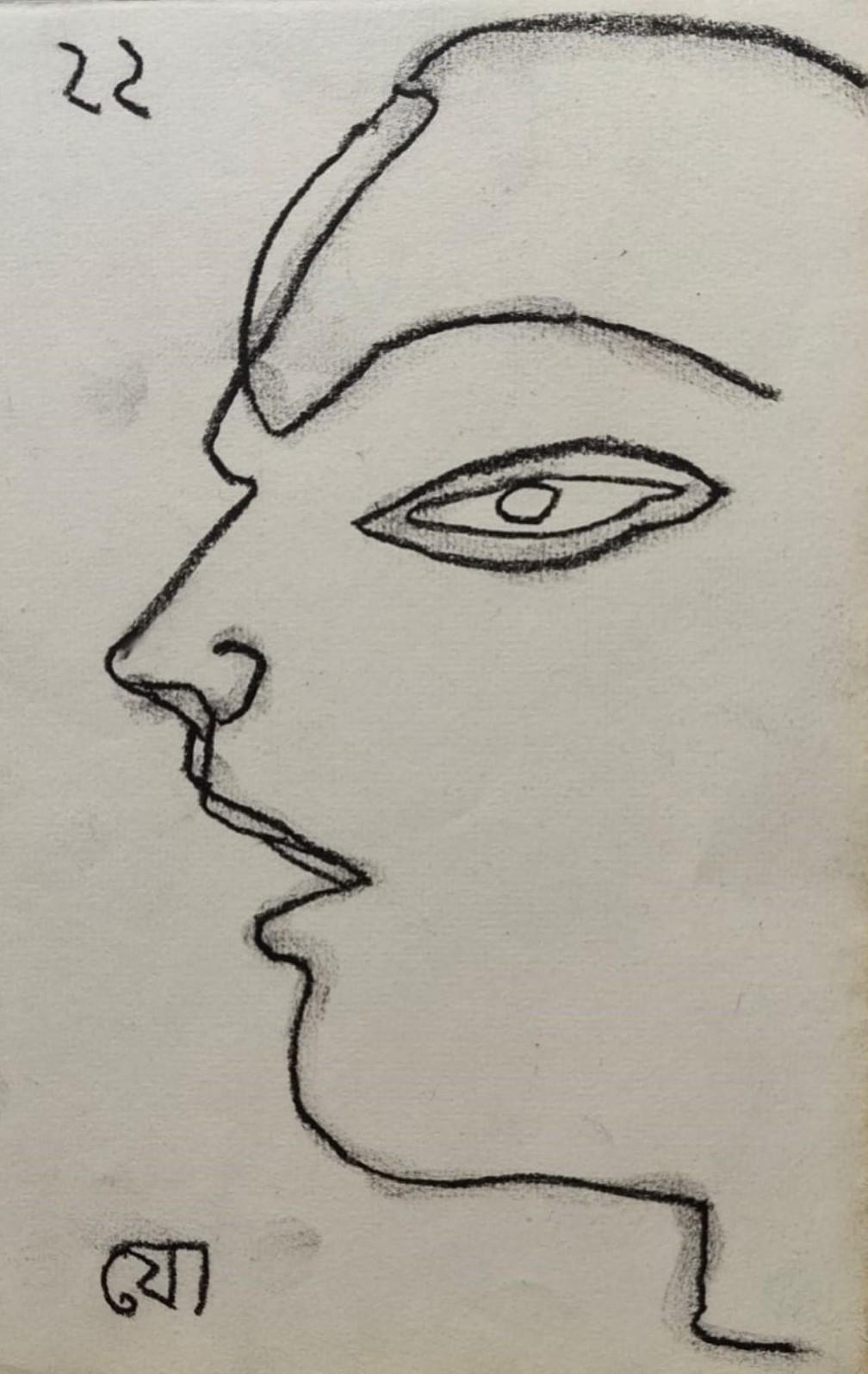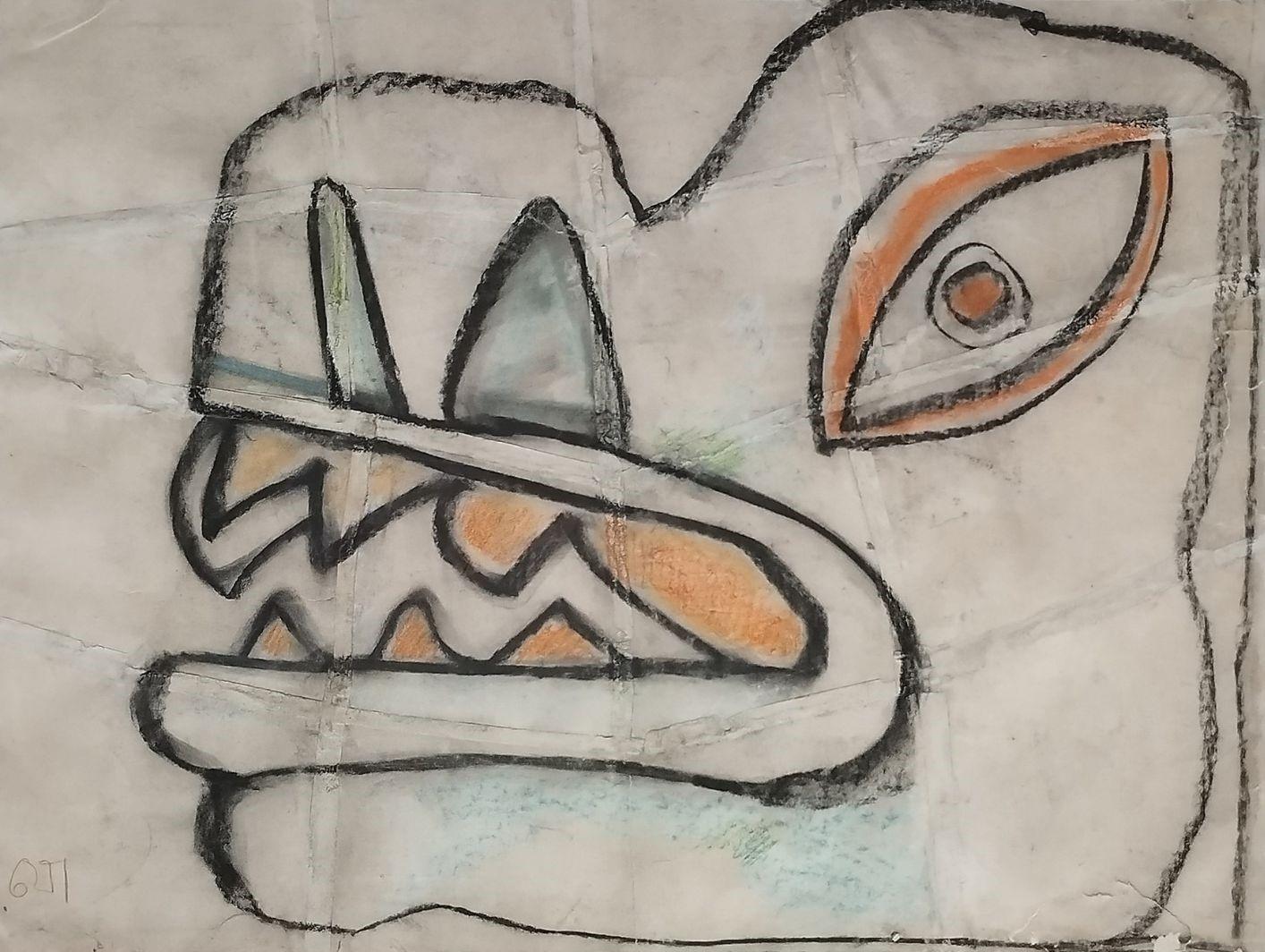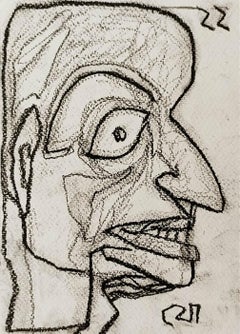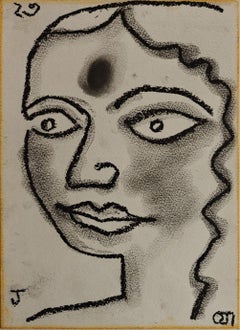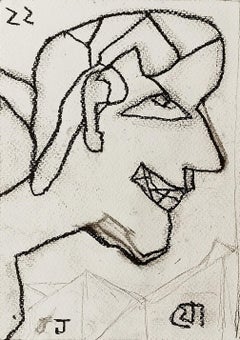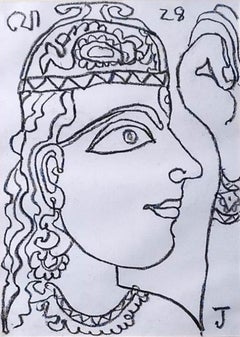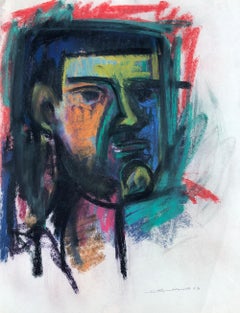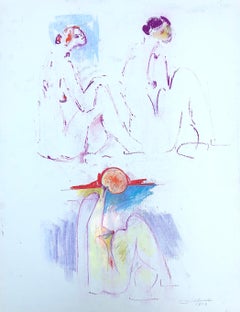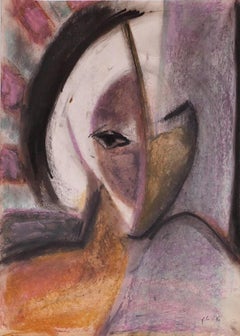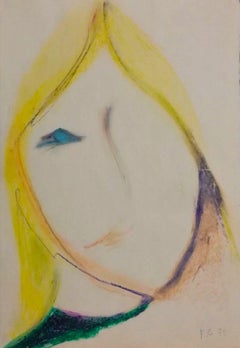Items Similar to Untitled, Figurative, Dry Pastel on Paper by Jogen Chowdhury "In Stock"
Video Loading
Want more images or videos?
Request additional images or videos from the seller
1 of 3
Jogen ChowdhuryUntitled, Figurative, Dry Pastel on Paper by Jogen Chowdhury "In Stock"2022
2022
$3,090
£2,393.87
€2,726.92
CA$4,424.07
A$4,831.43
CHF 2,536.09
MX$57,948.62
NOK 31,940.72
SEK 30,004.63
DKK 20,362.36
About the Item
Jogen Chowdhury - Untitled
Dry Pastel on Paper
8.2 x 5.8 inches, 2022
(Unframed & Delivered)
Modern Indian artist Jogen Chowdhury executed Still life drawing in Ink, pastel.
Always a powerful artist, Chowdhury developed his individual style after his return from France in the late '60s. Although Chowdhury has painted oils, his forte is painting in ink, watercolour and pastel. The sinuous line contouring the flaccid figures, the crosshatching to achieve tonal variations distinguish C'howdhury's paintings which show men and women enigmatic situations with provocative gestures placed in a dark dream- space.
Style: He has an immense contribution in inspiring young artists of India. Jogen Chowdhury had developed his individual style after his return from Paris. His most famous paintings are in ink, watercolour and pastel. He has painted in oil medium as well.
Jogen Chowdhury has been widely acknowledged to be, the master of the unbroken line. Like Léger, Chowdhury has been stirred by the linear Kalighat pat tradition, but his lines are emotive and used to express and suggest the character of a person. This is done by, distorting the form without breaking the line and in the world of young, contemporary art; distortion has been Jogen Chowdhury’s most significant impact. Perhaps, because of this, a common observation of his work is that his “people” are caricatures. The person feels familiar to the viewer but it is far more individualised – the face is imaginary but the psyche or characteristics are real. The power and beauty of his technique and line is this play between the known and the unknown. In Jogen Chowdhury’s work, the figure is always in the foreground, it is primary, it conveys everything. He uses colour to give volume to his figures and the fluidity of his lines bring a sensual aspect to his forms.
About the Artist and his work :
Born : Born 1939 in Daharpara Village, Faridpur, Bangladesh. Jogen Chowdhury is an eminent Indian painter and considered an important painter of 21st century India.
Family Background :
His father Pramatnath Chowdhury was a Brahmin zamindar. Both his parents took interest in art, Jogen Chowdhury’s father Pramatnath Chowdhury painted several mythological scenes from the village theatres and also sculpted various Hindu icons. Whereas his mother was an expert in Alpana drawings.
1939-47 Jogen Chowdhury lived in a village atmosphere. And after partition in 1948, the whole family shifted. Till 1951 the whole family stayed at the police department quarter of his uncle, where on the walls Jogen Chowdhury painted his first painting, 1962 Jogen Chowdhury was employed as Designer in the Handloom Board.
Education :
1955-60: Studied at the Government College of Art and Crafts, Kolkata.
1965: He went to Paris to study in Ecole des Beaux-Arts, in William Hayter’s Atelier 17.
Professional Experience :
1968-72: He worked as an Art-Designer, Madras Handloom Board, Madras.
1970: A collection of his poems were published, titled ‘Hridoy Train Beje Othey’.
1987: Joined Kala Bhavan, Santiniketan as a professor of painting.
Selected Exhibitions :
1972, 1975 & 1978 respectively: I, III, IV Triennales at New Delhi.
1979: The Sao Paolo Biennale.
1980: The exhibitions at the Fukuoka Museum, Japan.
1982: The Royal Academy, London.
1982: The Hirschhorn Museum, Washington D.C.
1986: The II Havana Biennale
1989: ‘Festival of India’, in Geneva
2002: Saffron art & the Pundole art gallery, New York.
Honours and Awards :
2003 - Jury Member, Singapore Biennale Exhibition of Art, Singapore
2001 - Kalidas Sanman, Government of Madhya Pradesh
1986 - Received Award In the 2nd Biennale of Havana, Cuba
1966 - Awarded Prix le France de la Jeune Peinture, Paris
1965-67 - Awarded French Government Scholarship, Studied at L’Ecole Nationale Superiere des Beaux Arts and Atelier 17, Paris
1965 -67 - French Government Scholarship to Ecole Nationale, Superieure des Beaux -Arts, Paris.
- Creator:Jogen Chowdhury (1939, Indian)
- Creation Year:2022
- Dimensions:Height: 8.2 in (20.83 cm)Width: 5.8 in (14.74 cm)Depth: 1 in (2.54 cm)
- Medium:
- Movement & Style:
- Period:
- Condition:
- Gallery Location:Kolkata, IN
- Reference Number:1stDibs: LU604316163372
About the Seller
4.9
Vetted Professional Seller
Every seller passes strict standards for authenticity and reliability
Established in 2004
1stDibs seller since 2017
130 sales on 1stDibs
Typical response time: 21 hours
- ShippingRetrieving quote...Shipping from: Kolkata, India
- Return Policy
Authenticity Guarantee
In the unlikely event there’s an issue with an item’s authenticity, contact us within 1 year for a full refund. DetailsMoney-Back Guarantee
If your item is not as described, is damaged in transit, or does not arrive, contact us within 7 days for a full refund. Details24-Hour Cancellation
You have a 24-hour grace period in which to reconsider your purchase, with no questions asked.Vetted Professional Sellers
Our world-class sellers must adhere to strict standards for service and quality, maintaining the integrity of our listings.Price-Match Guarantee
If you find that a seller listed the same item for a lower price elsewhere, we’ll match it.Trusted Global Delivery
Our best-in-class carrier network provides specialized shipping options worldwide, including custom delivery.More From This Seller
View AllUntitled, Figurative, Dry Pastel on Paper by Jogen Chowdhury "In Stock"
By Jogen Chowdhury
Located in Kolkata, West Bengal
Jogen Chowdhury - Untitled
Dry Pastel on Paper
8.2 x 5.8 inches, 2022
(Unframed & Delivered)
Modern Indian artist Jogen Chowdhury executed Still life drawing in Ink, pastel.
Always...
Category
2010s Modern Figurative Paintings
Materials
Paper, Pastel
Untitled, Figurative, Dry Pastel on Paper by Jogen Chowdhury "In Stock"
By Jogen Chowdhury
Located in Kolkata, West Bengal
Jogen Chowdhury
Untitled
Dry Pastel on Paper
11.6 x 8.3 inches, 2023
( Framed & Delivered )
Modern Indian artist Jogen Chowdhury executed Still life drawing in Ink, pastel.
Always...
Category
2010s Modern Figurative Paintings
Materials
Paper, Pastel, Mixed Media
Untitled, Figurative, Dry Pastel on Paper by Jogen Chowdhury "In Stock"
By Jogen Chowdhury
Located in Kolkata, West Bengal
Jogen Chowdhury - Untitled
Dry Pastel on Paper
8.2 x 5.8 inches, 2022
(Unframed & Delivered)
Modern Indian artist Jogen Chowdhury executed Still life drawing in Ink, pastel.
Always...
Category
2010s Modern Figurative Paintings
Materials
Paper, Pastel
Untitled, Figurative, Dry Oil Pastel on Paper by Jogen Chowdhury "In Stock"
By Jogen Chowdhury
Located in Kolkata, West Bengal
Jogen Chowdhury
Untitled
Dry Oil Pastel on Paper
10.5 x 14.5 inches
2024
( Framed & Delivered )
Modern Indian artist Jogen Chowdhury executed Still life drawing in Ink, pastel.
Al...
Category
2010s Modern Figurative Paintings
Materials
Paper, Mixed Media, Oil Pastel, Pastel
In Surprised Mood, Dry Pastel on Paper by Artist Jogen Chowdhury "In Stock
By Jogen Chowdhury
Located in Kolkata, West Bengal
Jogen Chowdhury
In Surprised Mood, Dry Pastel on Paper
10 x 6.3 inches , 2022
( Framed & Delivered )
Style : He has immense contribution in inspiring young artists of India. Jogen ...
Category
2010s Modern Portrait Paintings
Materials
Paper, Pastel
Untitled, Dry Pastel on Paper by Artist Jogen Chowdhury "In Stock
By Jogen Chowdhury
Located in Kolkata, West Bengal
Jogen Chowdhury
Untitled, Dry Pastel on Paper
17.5 x 23 inches (unframed size)
( Unframed & Delivered )
In this striking dry pastel work, he channels raw expression through bold, p...
Category
2010s Modern Figurative Paintings
Materials
Paper, Pastel
You May Also Like
Untitled-032 pastel on paper by Hans Burkhardt
By Hans Burkhardt
Located in Hudson, NY
Untitled (1963)
Pastel on paper
24" x 18"
Hand-signed and dated "H Burkhardt '63" lower right.
Please note this work is unframed.
Provenance: The artist to his daughter Elsa. By ...
Category
1960s Modern Figurative Drawings and Watercolors
Materials
Paper, Pastel
Untitled-039 pastel on paper by Hans Burkhardt
By Hans Burkhardt
Located in Hudson, NY
Hans Burkhardt frequently used live models for his figural pastels, which he maintained an interest in throughout his long career.
Untitled (1973)
Pastel on paper, 26" x 20"
Hand-si...
Category
1960s Modern Figurative Drawings and Watercolors
Materials
Paper, Pastel
Portrait - Drawing by François Chapuis - 1976
Located in Roma, IT
Portrait is an artwork realized by François Chapuis in the 1976.
Mixed media on Paper.
Hand-signed and dated on the lower right.
Good conditions
The portrait is linear and simp...
Category
1970s Contemporary Portrait Drawings and Watercolors
Materials
Mixed Media
Portrait - 1970s - François Chapuis - Pastel - 1975
Located in Roma, IT
Portrait is an original artwork realized by François Chapuis in the 1970s. Pastel on paper; on the lower right corner, the artist wrote his initials i...
Category
1970s Contemporary Portrait Paintings
Materials
Pastel
Portrait - Original Pastel Drawing - 1940s
Located in Roma, IT
Portrait is an original drawing in Pastel realized by an anonymous artist in the 1940s.
Good conditions except for a cutaway on the top-left angle.
The artwork is depicted through ...
Category
1940s Modern Figurative Drawings and Watercolors
Materials
Oil Pastel
"Untitled, " Oil on Paper - Monochromatic Figurative Drawing
Located in Houston, TX
This minimalist painting on paper is part of a series, which references a mantra of Bhatt’s, “life is a circus.” Floating in space, the characters portrayed in this work play out their roles, while remaining unaware of the full scope of their surroundings.
Amita Bhatt received her BFA from the Maharaja Sayajirao University, Vadodara, India and her MFA from the Maryland Institute College of Art, Baltimore, Maryland. Bhatt’s work has been exhibited at noteworthy venues such as the Bluestar Contemporary Art Center, Walters Art Museum, The Station Museum of Contemporary Art, and The Project Row Houses, all in the United States as well as Museo Pedro de Osma in Peru. She has also been the recipient of several prestigious awards and recently served as a Grant Panelist on the National Endowment for the Arts. Her works are included in many important private and public collections.
Bhatt digs deep into world philosophies and mythologies to answer questions pertaining to our political as well as personal belief systems. Unafraid to explore uncomfortable territories, the artist mines from a range of sources to create hybrid creatures that are often symbolic of man’s psychological condition in an angst-ridden zeitgeist.
In exploring issues of identity and violence, Bhatt’s research led her to the beginnings of mankind. Most ancient creation...
Category
2010s Symbolist Figurative Drawings and Watercolors
Materials
Charcoal
More Ways To Browse
Hopi Art Painting
Jacob Markiel
Jazz Painting Large
Jean Jacques Henner
John Golding Painting
John Julian
Lempicka Painting
London Blitz
Lonely Man
Marlboro Man
Mid Century Friends
Nude Painting Of A Boy 2019
Nun Oil Painting
Oil Painting Anonymous
Oil Tank
Old World Paintings
Patricia Gren Hayes On Sale
Patrick Nevins
